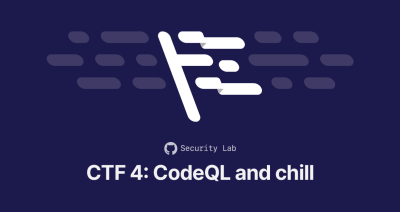
Now you C me, now you don’t, part two: exploiting the in-between
Aimed at developers, in this series we introduce and explore the memory unsafe attack surface of interpreted languages.
Dedicated to advancing the understanding and detection of software vulnerabilities—and explaining the latest vulnerability research from the GitHub Security Lab. Go behind the scenes with the GitHub Security Lab, a collaborative initiative that brings together security researchers, developers, and organizations to find and fix security vulnerabilities in open source software.

Aimed at developers, in this series we introduce and explore the memory unsafe attack surface of interpreted languages.

This blog describes a security vulnerability in the infrastructure that supports Germany’s COVID-19 contact tracing efforts. The mobile (Android/iOS) apps are not affected by the vulnerability and do not collect and/or transmit any personal data other than the device’s IP address. The infrastructure takes active measures to disassociate true positives from client IP addresses.

Ubuntu 20.04 local privilege escalation using vulnerabilities in gdm3 and accountsservice (CVE-2020-16125, CVE-2020-16126, CVE-2020-16127)

In this post I’ll give details about how to exploit CVE-2020-6449, a use-after-free (UAF) in the WebAudio module of Chrome that I discovered in March 2020. I’ll give an outline of the general strategy to exploit this type of UAF to achieve a sandboxed RCE in Chrome by a single click (and perhaps a 2 minute wait) on a malicious website.

Security is a complex area. One software component may break the assumptions made by another component and it is not always clear who should fix the code to remediate the security implications.

Aimed at developers, in this series we introduce and explore the memory unsafe attack surface of interpreted languages.

In this post I’ll show how input validation which should be used to prevent malformed inputs to enter our applications, open up the doors to Remote Code Execution (RCE).

This post details how an open source supply chain malware spread through build artifacts. 26 open source projects were backdoored by this malware and were actively serving backdoored code.

Saying thanks is now a core part of the Security Advisory workflow.

We examine the dangers of network integer arithmetic based on a case study of security vulnerabilities reported to the ntop project.

Join our Capture the Flag challenge to use your CodeQL skills or learn new ones.

In this post I’ll show how garbage collections (GC) in Chrome may be triggered with small memory allocations in unexpected places, which was then used to cause a use-after-free bug.

A phishing campaign targeting our customers lures GitHub users into providing their credentials (including two-factor authentication codes). Learn more about the threat and what you can do to protect yourself.

Learn more about the Bug Bounty program, including a recap of 2019’s bugs, our expanded scope, new features, and more.

This is the fourth and final post in a series about Ubuntu’s crash reporting system. We’ll review CVE-2019-11484, a vulnerability in whoopsie which enables a local attacker to get a shell as the whoopsie user, thereby gaining the ability to read any crash report.
Build what’s next on GitHub, the place for anyone from anywhere to build anything.